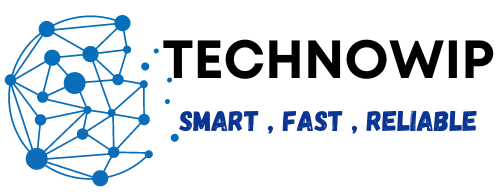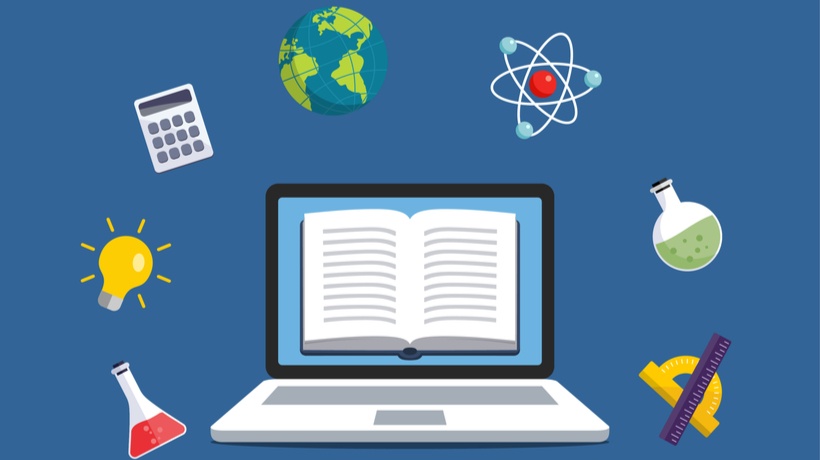Introduction:
Artificial Intelligence (AI) has significantly reshaped various sectors in recent years, and education is no exception. As technology continues to evolve, AI promises to revolutionize the way we learn, teach, and interact within the educational space. However, while it offers numerous benefits, there are concerns and challenges that need to be addressed. In this blog post, we’ll explore the pros and cons of AI in education, breaking them down in a clear and realistic manner.
Using factual data and real-world examples, I’ll show you how AI is changing education, with a focus on the good and the not-so-good aspects. By the end, you’ll have a balanced perspective on the impact AI has in this critical sector.

Pros of AI in Education:
Personalized Learning Experience
One of the most significant advantages of AI in education is its ability to provide personalized learning experiences for students. With AI-powered tools, students can receive tailored content, lessons, and exercises based on their individual learning styles and needs. This means students can learn at their own pace, helping those who may struggle in traditional classrooms while challenging those who excel.
For example, platforms like Coursera and Duolingo use AI algorithms to adapt courses according to the learner’s progress, making education more efficient.
Improved Efficiency for Teachers
AI tools can help reduce the administrative burden on teachers. From grading assignments to managing student records, AI can automate repetitive tasks, giving teachers more time to focus on teaching and engaging with students. For instance, AI-powered grading systems can assess multiple-choice questions and essays, providing instant feedback to students, which helps in reducing grading time.
Access to Education
AI-powered education tools, like chatbots and virtual classrooms, enable students to access learning materials anytime, anywhere. This helps bridge the gap for students in remote areas or those with limited access to traditional educational resources. According to a report by the World Economic Forum, AI could bring education to over 2.7 billion people who currently lack access to quality schooling.
Data-Driven Insights for Better Decision-Making
AI can process vast amounts of data, helping educators make data-driven decisions. This can help in tracking student progress, identifying areas where students are struggling, and offering intervention strategies. Platforms like Knewton and DreamBox Learning use AI to analyze student data and provide real-time recommendations for personalized learning interventions.
Language Learning and Support
AI in education is particularly beneficial for language learners. Tools like Google Translate and AI-powered language apps have revolutionized the way people learn new languages. By providing real-time translations, instant feedback, and adaptive lessons, AI enables learners to grasp new languages faster and more effectively.
Encouraging Lifelong Learning
AI can also play a pivotal role in promoting lifelong learning. With AI-driven platforms like LinkedIn Learning and edX offering an ever-expanding range of courses, professionals can continuously improve their skills, keeping pace with changing job markets. The flexibility of these platforms is empowering individuals to learn whenever and wherever they choose.
Cons of AI in Education:
Lack of Human Interaction
While AI offers personalized learning experiences, it cannot replicate the social and emotional aspects of human interaction. Traditional education relies heavily on human relationships—teachers, students, and peers engage in meaningful exchanges that AI systems are unable to mimic. AI may provide the information, but it lacks the empathy, encouragement, and support that human educators offer.
Privacy and Security Concerns
AI systems in education collect vast amounts of data to provide personalized learning experiences. However, this data collection raises significant privacy concerns. There have been instances where educational platforms were hacked, compromising sensitive student data. According to a 2020 study by the Electronic Frontier Foundation, AI-driven platforms often do not have sufficient safeguards in place to protect student data, leaving it vulnerable to misuse.
Bias in AI Algorithms
AI systems can inherit the biases present in their creators’ data sets. For example, if an AI system is trained on biased data, it may unfairly favor certain groups of students over others. In education, this can result in certain learners being overlooked or given unfair assessments. This issue has been highlighted by studies such as the one conducted by the AI Now Institute, which found that AI algorithms used in education systems can perpetuate existing societal biases.
Over-Reliance on Technology
As AI becomes more integrated into the education system, there’s a growing concern about an over-reliance on technology. This could make students dependent on machines for learning, diminishing their critical thinking and problem-solving skills. A study published by the National Education Policy Center found that excessive use of AI-based learning tools could reduce students’ ability to learn through traditional methods like discussion, reading, and writing.
Job Displacement for Educators
AI’s role in automating administrative tasks may sound like a positive thing, but it also brings the risk of job displacement. As AI systems become more efficient in grading and managing student information, the demand for certain administrative roles in education might decrease. Although AI cannot fully replace teachers, it can impact positions that support them.
High Implementation Costs
While AI offers numerous benefits, the cost of implementing AI systems in education can be prohibitive, particularly for schools and educational institutions with limited budgets. The expense of acquiring, maintaining, and updating AI technology can be a barrier to entry, especially for public schools or institutions in developing countries.
My Take on AI in Education
I’ve always been excited about the potential of AI to make education more accessible. For me, it’s a game-changer, especially in terms of providing personalized learning. I’ve seen friends struggle in traditional classrooms, and AI offers an opportunity for them to learn at their own pace, which is something I genuinely appreciate.
But, as much as I love the benefits AI offers, I can’t help but be cautious about the downsides. I feel that we need to maintain a balance. Technology should enhance the learning experience, not replace the human touch that’s so crucial in education.
My Concerns
On the flip side, I’m also concerned about job displacement. It’s something I’ve seen in other industries, and I wonder how AI will affect the role of educators. Technology should support teachers, not make their jobs obsolete.
Most Trending Topics
1. How AI Improves Student Engagement
AI tools and platforms often incorporate gamification and interactive learning to keep students engaged. With adaptive learning systems, AI provides students with personalized challenges that keep them interested. For example, platforms like Khan Academy use AI to adjust the difficulty of lessons in real-time, ensuring that students are always engaged at their level.
Students can also use AI-powered chatbots or virtual tutors to ask questions and receive immediate feedback, which helps keep them motivated. This real-time interaction mimics a more responsive and engaging environment compared to traditional classrooms.
2. AI in Special Education: How It Helps Students with Disabilities
AI plays a crucial role in providing inclusive learning experiences for students with disabilities. Technologies such as speech recognition, text-to-speech tools, and personalized learning systems assist students with visual or hearing impairments, autism, or other learning disabilities.
For example, AI-based applications like Ghotit help students with dyslexia by offering spelling and grammar suggestions that are tailored to their needs. Similarly, AI-powered tools that offer real-time subtitles can support students with hearing impairments, allowing them to follow lessons more effectively.
3. Data Privacy and Ethical Concerns with AI in Education
As schools and universities collect vast amounts of data to train AI systems, there are growing concerns about student data privacy and how it is used. AI tools track not only student performance but also behavioral and personal data, which raises questions about how this information is stored, shared, and protected.
There have been cases where AI systems have unintentionally reinforced biases, leading to ethical concerns. For instance, if AI systems are trained on biased data, they may provide inaccurate feedback or create unfair learning environments.
4. AI’s Impact on Teacher-Student Relationships
While AI can enhance learning, it could also potentially weaken the human connection between teachers and students. In a traditional classroom, the teacher-student relationship is vital for emotional and social development. However, AI-based learning systems risk removing some of this personal interaction.
For instance, students may miss out on face-to-face mentorship or the opportunity to express their emotions and struggles. Teachers play a crucial role in recognizing these emotions, something AI cannot yet replicate.
5. AI in Assessment and Evaluation: Can AI Replace Traditional Exams?
AI is changing how students are assessed. Traditional exams and grading systems are being replaced or supplemented by AI-driven assessments that can evaluate a broader range of skills, including critical thinking, creativity, and problem-solving.
Tools like Turnitin already use AI to check for plagiarism, but AI can also track a student’s learning journey over time, offering deeper insights than a single exam ever could. However, there is concern that over-relying on AI to evaluate students could overlook factors like creativity, social skills, and emotional intelligence, which are harder to quantify.
6. AI’s Role in Lifelong Learning and Skill Development
AI isn’t just for K-12 or university education; it also plays a significant role in lifelong learning. As the job market continues to evolve, AI is helping workers upskill or reskill by offering personalized learning experiences in areas such as coding, marketing, and data science.
Platforms like LinkedIn Learning use AI to recommend courses based on users’ career aspirations and learning preferences. This makes skill development more accessible and personalized, encouraging continuous learning well beyond traditional education systems.
Conclusion:
AI’s role in education is undeniable. From personalized learning and data-driven insights to making education more accessible, the advantages are clear. However, the potential downsides, including privacy concerns, bias in algorithms, and the risk of over-reliance on technology, cannot be overlooked.
In my opinion, the future of AI in education lies in its ability to complement, not replace, the human aspects of learning. While we should embrace the benefits AI offers, we must also address its challenges and ensure it’s implemented responsibly. After all, AI should serve to enhance the educational experience, not diminish it.
Ultimately, like any tool, AI is most effective when used in the right way. It’s up to us—educators, policymakers, and tech developers—to ensure that AI in education creates a balanced, inclusive, and supportive learning environment for all.
FAQS
1. What is the role of AI in education?
AI in education primarily focuses on improving learning outcomes, personalizing learning, automating administrative tasks, and enhancing the efficiency of both students and teachers. It uses algorithms to adapt content, assessments, and support systems to individual learner needs.
2. How can AI personalize learning for students?
AI can personalize learning by tracking a student’s progress and adapting content to their specific pace, strengths, and weaknesses. AI-powered platforms like Khan Academy or Duolingo adjust difficulty levels based on the learner’s performance, providing a more tailored experience.
3. Does AI in education replace teachers?
No, AI doesn’t replace teachers; instead, it complements their work by handling repetitive tasks, such as grading or administrative duties, giving teachers more time to focus on actual teaching. AI assists teachers in providing a more personalized experience for each student.
4. What are the main advantages of AI in education?
The main benefits include personalized learning, time-saving for teachers, instant feedback for students, accessibility for learners with disabilities, and the ability to scale learning to large numbers of students. AI can also provide real-time data that helps in improving educational content and strategies.
5. Are there any drawbacks to using AI in education?
Yes, some cons include over-reliance on technology, lack of human interaction, data privacy concerns, and accessibility issues for students without the necessary technology. Additionally, AI may struggle with understanding the emotional and social aspects of learning that are crucial for overall development.
6. How does AI improve teaching efficiency?
AI helps teachers by automating administrative tasks, grading assignments, and analyzing student performance data. This allows teachers to spend more time on meaningful instruction rather than mundane tasks. AI tools can also suggest improvements in teaching methods based on student feedback.
7. Can AI help students who struggle with traditional classroom settings?
Absolutely. AI allows students who struggle with traditional methods to learn at their own pace, offering customized lessons and practice materials. This can be particularly helpful for students with learning disabilities, as AI can cater to their specific needs without stigma.
8. Does AI in education provide real-time feedback to students?
Yes, AI-powered systems can provide real-time feedback, allowing students to understand their strengths and areas for improvement immediately after completing tasks or assignments. This helps students learn faster and more effectively.
9. What are some examples of AI tools used in education?
Popular AI tools in education include platforms like Grammarly (for writing assistance), Coursera (for adaptive learning), IBM Watson (for personalized learning experiences), and Squirrel AI (which adapts to students’ learning styles).
10. What are the ethical concerns regarding AI in education?
Some of the ethical issues surrounding AI in education include concerns about student data privacy, the potential for algorithmic biases, and the risk of creating a digital divide where some students lack access to AI-powered tools. There’s also the question of whether AI could undermine the value of human educators.

